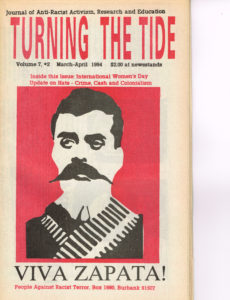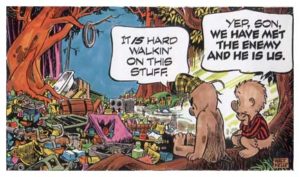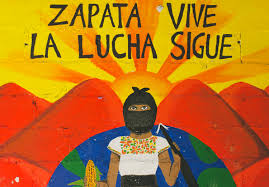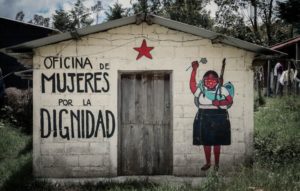TTT Volume 7 Number 2 March-April 1994


Click here to download a PDF of the March-April 1994 issue
EXCERPTS FROM “TURNING THE TIDE“
Volume 7, Number 2, March-April 1994
A Journal of Inter-communal Solidarity
Edited by Michael Novick
published by Anti-Racist Action-Los Angeles/People Against Racist Terror (ARALA/PART)
P.O. Box 1055
Culver City CA 900232
Current, correct phone: 323-636-7388
All rights reserved but may be used or reproduced by movement groups with a credit line including ARA-LA/PART’s name and address, and ordering info on “Turning the Tide:” available for $20 a year (six issues) from Anti-Racist Action, PO Box 1055, Culver City CA 90232 or via paypal to [email protected].
KNOW THE ENEMY
A Chinese proverb has it that if you know the enemy, and know yourself, you can fight a thousand battles and never be defeated. More recently, Pogo, a comic strip character who poked fun at McCarthyite politicians and sanctimonious preachers during the 50’s, when that was a risky proposition, coined the saying, “We have met the enemy and he is us.”

Understanding that the enemy is not only external to us, or opposite to us, but that indeed the enemy is within us as well, is vital to anti-racists. We cannot demonize our enemy without dehumanizing ourselves as well.
But having said that, it is still crucial to understand the nature and operation of our enemy, the root sources of the racism we are trying to uproot. If we believe we are dealing only with ignorance, or stupidity, or intolerance, (rather than with injustice and self-serving power), we will pursue only well-meaning efforts that will not succeed in dealing with the problem. We will be ill-prepared for the consequences even these efforts call down on us if the real enemy feels at all threatened. We are up against a system whose survival depends on racism; a system that produces and reproduces racism in generation after generation, despite any contrary ideals it professes; a system that will in fact take desperate measures to defend, sustain, and perpetuate racism. Because racism is vital to, and inextricable from, the functioning of the system as a whole.
So we need to understand the mechanisms which this racist system uses to propagate itself and to attack or neutralize those it considers its enemies. In the past few issues of Turning the Tide, we have looked at several principles essential to a healthy anti-racist movement: self-respect, self-determination, self-defense, solidarity, spirituality, struggle, self-criticism, and socialism. This month we want to examine the nature of the beast, and again, as a mnemonic device, we are categorizing the most important features of this system and its defense/attack mechanisms with terms beginning with the letter “C”.
The 5 “C”s of Capitalism
This system, is of course, capitalism, the system based on the rule of the dollar over all human endeavors. It functions through commoditization — turning all human relationships, products, and capacities into commodities, artifacts to be bought and sold for a profit. But equally essential to the system as a defining element is colonization, the conquest and expropriation of land, labor and resources from their original inhabitants. Criminalization is another central aspect of the functioning of this system — dissent or resistance is a crime, even work or survival in themselves can be deemed a crime. Finally, when people try to break out of the shackles of commoditization, colonization and criminalization, the system will resort to its twin tactics of coercion and cooptation, the stick and the carrot, to intimidate or buy off its opposition. This essay will briefly examine each of these five aspects in turn, and separate sections of this issue of TTT will address crime and colonialism in greater depth.
Commodities are the building blocks of the system under which we live. “Commodities” does not only mean the kind of trading that goes on at the Chicago Mercantile Exchange, where people gamble on buying or selling pork belly futures, or corn, or orange juice, or precious metals. Commodities are the way every aspect of daily life is organized within the capitalist system, and all human relationships are carried out through and by means of commodity exchanges. Most of us accept this system as fair, just and natural; accordingly we sell ourselves to the highest bidder, and cannot begin to fathom how this produces so many of the problems we try to overcome. It is this willing participation, in which all our best efforts are used against us, that makes the system so strong.
Money, the measure by which all human activity and all natural “resources” are assigned a value so they can be bought and sold, is itself a commodity. Some people make millions of dollars buying and selling money all over the world. As money makes or begets money in this way, all sense of the true, inherent value of human endeavor or planetary existence is lost. What’s more, our creative capacities become a commodity, bought and sold on the labor market for wages. Under capitalist slavery, the most brutal and degrading form of exploitation ever devised, human beings themselves became commodities — things to be purchased, used and discarded. Racism was invented first of all to justify this dehumanization.
But it is almost equally shameful to buy and sell the land, the air, or the water, all of which our society continues to do. Here in Los Angeles, the “right” to poison the air has become a commodity, in which companies trade authorizations to produce smog. Around the country, homelessness is a manifestation not of personal failings in the homeless, nor some lack of charitability in our national character, but quite simply of the fact that, because land is private property with a dollar value measured in rent, decent housing is a commodity which has been priced out of people’s reach. Defying the commodity system by squatting is a crime; even giving away food to people has been criminalized. From Santa Barbara to Santa Ana, cities are making it a crime to live on the streets, in defense of “property values.” With the general abolition of chattel slavery, wage slavery continues, in which we sell our creative capacities. If no one cares to buy those capacities, we become criminals.
The global economy is a commodity economy. Not only are goods and products traded, but Capital itself flows around the world constantly seeking cheaper labor, constantly driving the cost of labor power down towards or below the cost of reproducing and sustaining human life. Blood and human body parts are commodities today; children are killed for their organs. Procreative capacity is a commodity, as surrogate mothers rent their wombs; top dollar in the international baby market goes of course to white babies. And women’s bodies in general have long been a prized commodity, bought or rented for sexual exploitation or used to market other commodities with the promise of “sex.” The destruction of the environment is rooted in a system that only sees the value of something that can processed and sold for a profit.
The guiding principle of commodities is always “buy low, sell high,” meaning that the competitive advantage always goes to the one who can corner the market, monopolize the source materials or control the distribution of the product. But of course, monopoly is the antithesis of competition, a situation in which one “competitor” remains, having swallowed or destroyed the rest. (Yet this doctrine of competition, self-destructive and self-contradictory as it is, has gripped and shaped the psychology of everyone within the confines of the system.)
Of course, there is no price lower than free. Theft, pure and simple, is the impulse of colonization, as it was of slavery: to take what belongs to or is produced by others, especially other cultures or systems, and by absorbing it into our own commodity economy, assigning it a vast commodity exchange value where it had none before. The profit percentage on the sale of a commodity which you obtained with zero cost is of course infinite. Therefore slavery, therefore land theft, therefore the wasting of the land. Much of the world’s ecological crisis is due to the vast distortions produced by driving people engaged in subsistence agriculture into peonage or the swollen cities, while the land is turned over to unsustainable cash crop mono-culture to provide commodities for the world market (cotton, coffee or cocaine). The costs of this destruction is borne by the colonized, while the proceeds go to the colonizer (until the planet is destroyed). Similarly, the advantage of male supremacy to the capitalist is that it allows him to expropriate and profit from women’s unpaid, unwaged labor.
As the system has matured, it continues to colonize and re-colonize both other territories and people and also within itself. It has also heightened and intensified colonization by injecting into the colonized lands and people the system of commodity production and exchange. This creates new markets (driving up prices) and incorporates new workers (reducing the costs of labor and of reproducing capital). But just as the worker, whose ability to work is a commodity, can never make enough money to recapture what she produces, the capitalism developed within the colonies is predicated on being subordinate, and can never overcome that condition of subordination or overtake the colonizer.
The state has grown up to enforce and carry out that conquest, colonization, and confiscation domestically and internationally. Those who run the state seek a monopoly on power, the intoxicating and corrupting ability to force people to do what you want. And the essence of this state power is criminalization; defining and carrying out the punishment for disobedience. Criminalization serves several purposes, right up to the present moment. First of all, colonized people are criminalized in their essence. Whoever is not a colonizer and citizen is per se a criminal. Non-payment of taxes and tribute — refusing to transfer wealth to the capitalists for free — is the first crime. Next is the failure to produce or consume commodities: poverty. But behaviors are also criminalized because that makes them more profitable. A black market always allows you to buy cheaper and sell higher. Thus the criminalization of drugs, the criminalization of prostitution, the criminalization of immigrant labor do not aim at eliminating the market in these commodities, but at regulating and heightening their profitability.
Criminalization also serves two other essential purposes: it marginalizes people; and it drives them into the hands of organized crime, which far from being in contradiction to the system, is dependent on and supportive of it. The psychology of a petty or a major criminal is not opposed to the dollar mentality of the commodity/colonial system. The continuum from crime to business to government is not seamless, but they mesh together fairly well. Today, criminalization also functions as a method of re-enslavement and re-colonization. The prison industry is a growth mechanism; Gov. Pete Wilson of California is apparently relying on it to replace aerospace as the motor of the state’s economy. The prisons fill up with people of color, penal colonies that serve as a cross between slave labor camps and concentration camps. The differing crimes for which men and women are arrested, the differing arrest rates and charges against whites and people of color, draw a searing outline of oppression and stratification in our society.
To protect this system of commodities, colonialism and crime, the rulers who benefit from it use the twin tactics of coercion and cooptation. Their use of these tactics is grounded in and colored by racism from start to finish. During the era of settlement and slavery in America, for example, the color line between white indentured servants on the one hand, and African slaves and indigenous nations on the other, was enforced and solidified through both punishment of those whites who crossed the line, and inducements for those who didn’t. But similar tactics were used with people of color, though in different measure (more coercion and less cooptation). The loyalty to their masters of those slaves who were prepared to sell out the freedom conspiracies eroded the solidarity of all the slaves, and made possible the execution of the most militant leaders. Native people prepared to turn their lands into “property” for sale to the colonizers received a “fair price,” while those who resisted the resulting reservation system were hounded and killed.
These strategies continue to this day. The fierce repression of the Black Panther Party, the Puerto Rican Nationalists, the American Indian Movement, and the Brown Berets made the prospects of reintegration into the comforts of the system all the more attractive to white student radicals in the 60’s and 70’s, for instance. The combination of coercion and cooptation is always designed to make shutting up a lot more attractive than putting up when the time comes to make the choice of “put up or shut up.” This is same strategy carried out by the tough cop/nice cop interrogation team, the same false choice presented by conservative and liberal parties that both support the state and the regime. This is the same approach that has sustained male supremacy through dichotomizing women as “madonna or whore;” the same protection racket that says a woman is either legitimized by association with a particular male who favors her, or “fair game” to all men who target her.
Cooptation and coercion never operate alone or in a vacuum; one is always the symbiotic partner of the other in defusing threats to the system. The torturers trained by the CIA in Central and Latin America learned that only by alleviating the pain does the torturer break his victim’s will and gain his collaboration. The cooptive offer makes it harder to withstand the coercion; the threat of coercion makes the appeal of cooptation all the more attractive. Far from opposing each other, or keeping each other honest, the liberal and conservative variants of capitalism/colonialism operate smoothly in tandem.
The revolutionary challenge posed by anti-colonial forces to this system and strategy, is that of non-collaboration. His embrace of non-collaboration, defying both coercion and cooptation by apartheid-colonialism during a quarter century in prison, is what endeared Nelson Mandela to millions. More so than violence, this replacement of the colonizer’s values, goods and belief system is what fueled Gandhi’s struggle for Indian independence. In Puerto Rico, colonized by Columbus half a millennium ago, and still today controlled politically, economically and militarily by the U.S. empire, this strategy, called “retraimiento,” has enabled the Puerto Rican people to withstand cultural genocide and socio-political annihilation. This strategy must be embraced not only by the colonized, but by all oppressed and working people, and all people of conscience. We must strive to refuse to participate in our own degradation; seek to restore the dignity and integrity of our cultures and our labor; struggle to free our minds collectively from the shackles of colonialism and competition, so that our bodies will follow. This process of mental and physical decolonization is as essential for the colonizer as for the colonized.
Anarchism and the Black Revolution by Lorenzo Komboa Ervin
Reviewed by Miguel Sanchez
Lorenzo Kom’boa Ervin’s book Anarchism and the Black Revolution calls for mutual aid and solidarity between anarchists and Black revolutionaries. Ervin is not suggesting that either group surrender its autonomy, but that they work in concert towards a mutual goal of overthrowing capitalism, racism, sexism, classism, and authority in general.

Jonina Abron and Lorenzo Kom’boa Ervin, veterans of the Black Panther Party and now Black autonomists
The anarchist movement in the US today tends to be made up white, middle class intellectuals. Given their demography, Ervin argues, anarchists must recognize that their race and class privileges isolate them from other radical liberation movements. Rather than recruiting non-white, non-middle class members into their movement, he proposes that anarchists understand and assist, without coopting, the radical struggles of these groups, such as the Black liberation movement. Ervin does not assert that anarchists are white supremacists, but that in their belief that “in essence, black people are ‘the same’ as whites, and that we should fight around ‘common issues’ rather than ‘racial matters,'” they do not recognize their own privileges within the scope of a racist society, and thus have a flawed strategy.
Aware of the social isolation of white anarchists, Ervin tells them, “there will be no revolution if white supremacy is not attacked and defeated first,” in hopes that both groups can act on the principle of mutual aid.
Along with the general theme of the need for solidarity between socially diverse revolutionary movements, Ervin also discusses the tactics which he believes such movements should use. These include Black tax boycotts, national rent strikes, urban squatting, a boycott of US business, and a Black general strike and struggle he sees as necessary and effective in revolutionizing society as a whole for the better. He advocates a militant and if necessary armed response to racist and fascist groups aiming to liquidate their organizations.
Lorenzo Kom’boa Ervin is a bold, above-ground radical who is not confused, coopted or placated in our apathetic times. His book is an inspiration and a challenge for any revolutionary, or anyone who aspires to revolutionary change, and I highly recommend it.
[Miguel Sanchez is an L.A. area anarchist activist involved in worker organizing with the I.W.W. —Ed.]
Lorenzo Kom’boa Ervin is coming to L.A. April 15-23 (1994) as part of a national tour. He will be speaking at Midnight Special Books in Santa Monica and a number of other venues. Contact Miguel Sanchez, 213-368-4604, for more information.
Lorenzo Kom’boa Ervin is a former member of the Student Non-Violent Coordinating Committee (SNCC) and the Black Panther Party who was forced into exile on a frame-up in 1968. In Cuba and later Czechoslovakia he became disillusioned with state socialism. Kidnapped and illegally returned to the US, he was sentenced to life in prison, where he embraced anarchism. His legal challenges resulted in his release, and he returned to his birthplace, Chattanooga, TN where he has been active opposing police brutality and organizing against the KKK. He participated in a civil rights suit that overturned the system of municipal government in the city, which had disempowered the Black community. Recently, he has been active in anarchist circles nationally. He will be speaking about his experiences in SNCC and the Panthers, and fighting the cops and the Klan today. He will address the questions that confront the contemporary Black freedom movement from a revolutionary and anti-authoritarian perspective, and the importance of building support for prisoners. –MS

LAWS PROMULGATED BY THE EZLN (Ejercito Zapatista de Liberacion Nacional) upon surfacing in armed resistance in Chiapas, Mexico in response to the adoption of NAFTA
Mexicanos; workers, campesinos, students, honest professionals, Chicanos, progressives of other countries: We have begun the struggle we need to make to achieve the demands that have never been satified in the state of Mexico — work, land, housing, food, health, education, liberty, democracy, justice and peace.
We reach this point having traveled hundreds of years pleading and believing in promises that were never fulfilled; always we were told to remain patient and wait for better times. Prudence was recommended to us; we were told that the future would be different. But now we see that nothing is different, things are the same or worse for us than the way our grandparents and parents lived. Our people continue dying of hunger and curable disease, swamped in ignorance and illiteracy, deprived of our culture. And we have understood that if we do not fight, our children will be condemned to the same. And this is not just.
Necessity brought us together and we said “BASTA!” — enough! There is no more time or desire to wait for others to come and resolve our problems. We are organizing ourselves and have decided to take up arms into our grasp, as has been done by the best children of the Mexican people throughout the length of our history.
We have commenced combat against the federal army and other repressive forces; we are thousands of Mexicanos disposed to live for the homeland or die for liberty in this war which is necessary for all the poor, exploited and miserable people of Mexico, and we are not going to stop until we reach our goals.
We exhort you to support our movement, since the enemy that confronts, the wealthy and their State, is cruel and pitiless, and would set no limits on its blood-thirsty nature to have done with us. This can be held off only by taking the struggle to all fronts, and from there by the sympathy of all of you, your support and solidarity, the diffusion that you can give to our cause; if you can make the ideals that we are putting forth your own, and incorporate yourselves into the revolution, raising them to your people wherever they are found — these would be very important factors towards the final triumph.
Translated and excerpted from “El Despertador Mexicano,” Informative Organ of the EZLN, Mexico, Number 1, December 1993. The periodical also included the “Declaracion de la Selva Lacandona,” a declaration of war on the Mexican Army, and a series of laws promulgated by the EZLN to govern and guide their forces and elaborate the nature of the society they are fighting to create in Mexico. Excerpts from these laws follow.
Instructions for Leaders and Officers of the EZLN:
- You will operate in accord with the orders received from the General Command or the commanders of combat fronts.
- If you find yourself operating militarily in isolated zones with difficulty in communicating with commanders, you should effectuate your military work, combatting the enemy constantly on your own initiative …
- Be sure to guard to the maximum possible the good order of the troops, especially when entering populated areas, giving guarantees of the life and interests of the inhabitants who are not enemies of the revolution …
- For feeding the troops, pasturing the horses, fuel and repair of vehicles, you should direct yourself to the democratically elected authority in the place … This authority should collect from among the civilian population what is possible and necessary for the Zapatista military …
- The people, in general, should take possession of their goods in accord with what is established in the Revolutionary Laws. The EZLN officers should offer to these people their moral and material support with the end of carrying out these laws and when the people solicit their aid …
The Law of War Taxes
In zones controlled by the EZLN, the following law is implanted …
- The law takes effect from the moment the EZLN finds itself operating in a specific territory …
- The law applies to the whole civil population, national or foreign, living in or passing through this territory.
- The law of war taxes is not obligatory for the civilian population that lives by its own resources without exploiting the labor force of another …
- The law is obligatory on all those who live by exploiting the labor of others … The small, middle and great capitalists of the countryside and city are obliged to fulfill this law without exception …
- (A series of sliding scale taxes are imposed on various enterprises and properties)
- All supplies captured from enemy armed forces are the property of the EZLN.
- All the goods recovered from the hands of the oppressor government shall be the property of the revolutionary government …
- All the war taxes collected by the revolutionary armed forces or the organized people shall pass into collective property of the respective populations …
- No civil or military authority, of either the oppressor government or the revolutionary forces, shall take any partt of these war taxes for the benefit of themselves or their families.
The Law of Rights and Obligations of the People in Struggle
… 1. The people in struggle against the oppressor government and the big Mexican and foreign exploiters, withour regard to their political affiliation, religious belief, race or color have the following rights:
- to elect their authorities freely and democratically …
- to demand that the revolutionary armed forces do not interfere in affairs of civil order …
- to organize and exercise the armed defense of their collective goods …
- the inhabitants of every village have the right to acquire and possess weapons to defend themselves … and use them against any men or group of men who attack their homes … This is valid only for those who are not enemies of the revolution.
… 3. The people in struggle … have the following obligations:
- to lend their services in assignments of vigilance adopted by the majority or by the military necessities of the revolutionary war …
- lend their services to transport the wounded, bury the dead, and similar work linked to the interest of the revolutionary cause …
- to give food and lodging to the revolutionary armed forces …
(Corresponding duties and obligations are imposed upon the EZLN)

The Agrarian Revolutionary Law
The struggle of the poor Mexican peasants continues reclaiming the land for those who work it. After Zapata, and against the reforms of Article 27 of the Mexican Constitution (which allowed the privatization of collective peasant land as part of the neo-liberal economics of NAFTA –ed.), the EZLN upholds the just struggle in the Mexican countryside for land and liberty …
- The law will affect all land-holdings in excess of 100 hectares if of poor quality or 50 hectares if of good quality. Landholders whose properties exceed these limits will be removed from the properties in excess of the limits and remain with the minimum permitted, being able to continue as small proprietors or join the movement of peasant cooperatives or communal land.
- Communal lands and ejidos are not affected by this law ..
- The lands affected by this law shall be shared with the landless peasants and farmworkers in the form of collective property for the formation of cooperatives … which should be worked collectively. …
- The great agricultural enterprises shall be expropriated and pass into the hands of the Mexican people. The machinery … shall be distributec among rural collectives …
- Lakes, rivers, streams, and seas are the collective property of the Mexcian people and shall be safeguarded against contamination and misuse …
- Commercial and health centers shall be created for the benefit of the poor peasants in the countryside …
- There shall be no taxes on campesinos who work collectively, nor for ejidos, cooperatives and communal land. From the moment this law takes effect, all debts, loans and taxes imposed by the oppressor government, the foreigners of the capitalists are canceled.
The Revolutionary Law of Women
(This law is illustrated by a photo we are unable to reproduce of a group of indigenous women bearing rifles in the Lacandon rain-forest.)

In its just struggle for the liberation of our people, the EZLN incorporates women in the revolutionary struggle without regard for race, creed, color or political affiliation, with the unique requirement of making theirs the demands of the exploited people … Further, taking into account the situation of the women workers in Mexico, the just demands for equality and justice for women are incorporated in the following revolutionary law of women:

- Women have the right to participate in the revolution in the place and level their will and capacity determine.
- Women have the right to work and receive a just salary.
- Women have the right to decide the number of children they can have and take care of.
- Women have the right to participate in community affairs, and to take charge if they are elected freely and democratically.
- Women and their children have the right to primary attention to their health and food.

- Women have the right to education.
- Women have the right to choose their partner and not to be obliged by force to contract marriage.
- No woman can be struck or physically mistreated neither by their family members or strangers. The crimes rape or attempted rape, will be punished severely.
- Women shall be able to occupy positions of leadership in the organization and to achieve military rank in the revolutionary armed forces.
- Women shall have all the rights and obligations set out by the (other) revolutionary laws and regulations.
Law of Urban Reform
In the urban zones controlled by the EZLN, the following laws shall be vigorously applied to provide a dignified living to dispossessed families:
- The inhabitants of their own homes will no longer pay real estate taxes.
- Renters who have more than 15 years inhabiting a dwelling will no longer pay rent until the revolutionary government triumphs and legislates it.
- Renters with less than 15 years will pay rent of only 10% of the salary of the head of the household …
- Urban lots that already count on public services can be occupied immediately …
- Empty public buildings and great mansions can be inhabited in a provisional form by various families making interior divisions …
The Labor Law
- Foreign companies shall pay their workers a salary per hour that is the equivalent in the national currency of what they pay in dollars in the exterior.
- National businesses shall increase salaries monthly in a percentage to be determined by a local commission on prices and wages. This commission shall be composed of representatives of the workers, squatters, business people and freely and democratically elected authorities. No reduction in current salaries shall be permitted.
- All the workers in the countryside and the city will receive free medical care … the medical costs shall be covered by the employers.
- All workers shall receive from the firm where they work a certain sum of stock in the company in accord with their years of service and in addition to their current pension. The monetary value of this stock should be used in the retirement of the worker, their spouse or beneficiary.
Law of Industry and Commerce:
- The price of basic products shall be regulated by the local commission (mentioned above) … increases in prices shall not exceed raises in salaries.
- Hoarding is forbidden …
- Supplies of tortillas and bread shall be assured to all …
- Industries and businesses that the bosses consider to be unproductive and intend to close … shall pass into the power of the workers to administer and their machinery shall pass into the property of the nation.
Social Security Law
- Abandoned children shall be fed and protected by the nearest neighbors …
- Old people without families shall have priority on housing and free food coupons.
- Those disabled in war shall receive priority attention and employment …
- The pensions of retirees will equal the minimum wage established by the commissions …
Law of Justice
- All prisoners shall be released from incarceration except those guilty of murder and rape, and the bosses of drug trafficking.
- All the government officials from the level of municipal president to president of the Republic shall be subject to an audit and judged for misappropriation of funds in case an element of culpability is found.
Live for the Homeland or Die for Liberty
Ejercito Zapatista de Liberacion Nacional – EZLN
